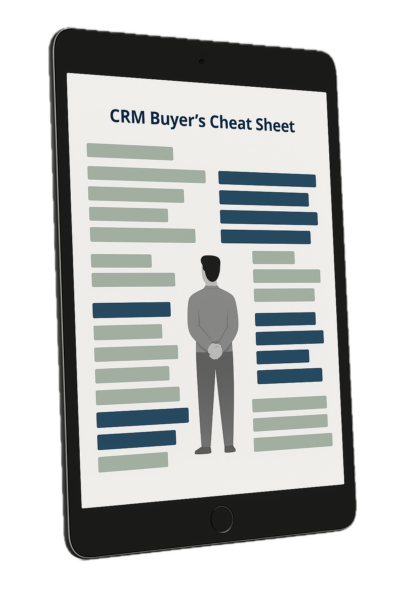 If your company is planning to move from a legacy CRM system or contact manager to a browser-based CRM solution, you will be forever rid of having to install and maintain CRM-related software on users’ desktops and laptops, right?
If your company is planning to move from a legacy CRM system or contact manager to a browser-based CRM solution, you will be forever rid of having to install and maintain CRM-related software on users’ desktops and laptops, right?
Well, not exactly. At many companies where Outlook is the standard email client, a CRM Outlook integration plugin is installed on every user’s computer as part of the CRM rollout.
What does a CRM Outlook plugin do? Here are a few of a CRM Outlook integration plugin’s functions:
Integration of inbound and outbound email – When sending an email to one or more people, a user can automatically attach that email to the recipients’ records in CRM along with any attachments. After receiving an email, a user can one-click attach that email to the sender’s record in CRM.
Contact synchronization – Allow users to synchronize a filtered list of CRM contacts to Outlook and/or synchronize contacts from Outlook to CRM.
Calendar synchronization – Allow users to synchronize their CRM calendar to Outlook and/or synchronize their Outlook calendar to CRM.
Allow for viewing of CRM record details within Outlook – Some CRM systems’ Outlook integration plugin allows users to preview data from a CRM contact record while clicked on an email from or to a matching CRM record.
Provide the Ability to Create a Support Case from an Email – If someone emails with a customer service or customer support issue, a CRM Case can be easily created from the email.
Potential Issues with CRM Outlook Integration Plugins
Is the installation of an Outlook plugin on a user’s machine problem free? It can be. But there can also be issues for which IT needs to allocate resources to solve.
Requires compatible versions of Windows and Outlook – Your company just upgraded to the latest version of Outlook. Is this version yet compatible with your CRM system’s Outlook plugin?
May require Exchange Server on the back-end to function properly – In other words, a user could have Outlook installed, but they may be connecting to a mail server via IMAP or POP
Inadvertent Contact and Account duplication – If contact synchronization is improperly set up, it’s not unheard of to have a set of Contacts synchronize from Outlook to CRM and then synchronize back to CRM as duplicate records.There’s also an inherent incompatibility between Outlook Contacts and CRM, as CRM has an extra, Account level in B2B environments. Synchronization of Outlook Contacts to CRM can sometimes result in Account duplication in CRM.
The possibility of random, technical issues that any installed software can have – The CRM Outlook plugin is just not working properly on a user’s computer? The answer might be to uninstall/reinstall the plugin. Files may need to be deleted from various areas of the computer before reinstallation. In extreme cases, the user’s machine may need to be completely rebuilt in order for the plugin to work properly.
Alternatives to CRM Outlook Integration Plugins
Bcc Option for Email Integration – Several CRM systems allow users to blind carbon copy a special email address on sends and replies. Adding this Bcc address will automatically link sent email to the matching CRM record. In addition, received emails can be forwarded to this special address and the link in CRM will also occur. With this approach to email integration, no plugin needs to be installed an the integration will work on any email client, including clients on Macs, tablets and smart phones.
Mobile Access to Contacts and Calendars – CRM to Outlook Contact synchronization was once an important feature when it was the only way for CRM users to get contacts onto their smart phone. A user would synchronize important CRM Contacts to Outlook and then, in turn, synchronize these contacts to their smart phone. However, due to an increasing number of mobile options for CRM, contacts can now be directly synchronized to a mobile device or viewed in real time via a mobile browser.
Alternative Email Solutions – several million businesses have adopted Google Apps and therefore have implemented Gmail as their corporate email solution. With Gmail, CRM to email integration can be managed via a browser extension with certain CRM systems, which means that no software needs to be installed on Windows.
While a CRM Outlook integration plugin can provide many benefits, it’s worth considering whether all users need to have the plugin installed on their local computers.




